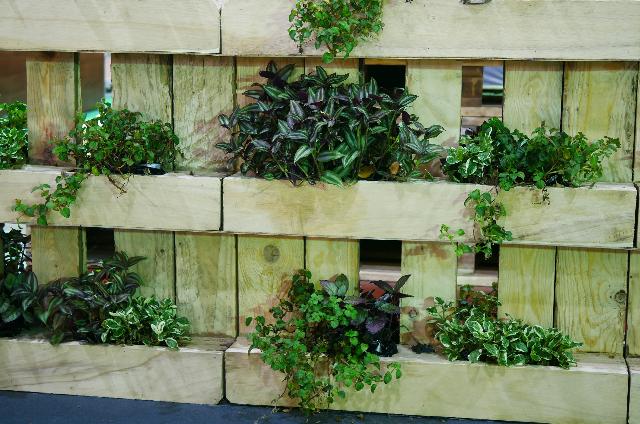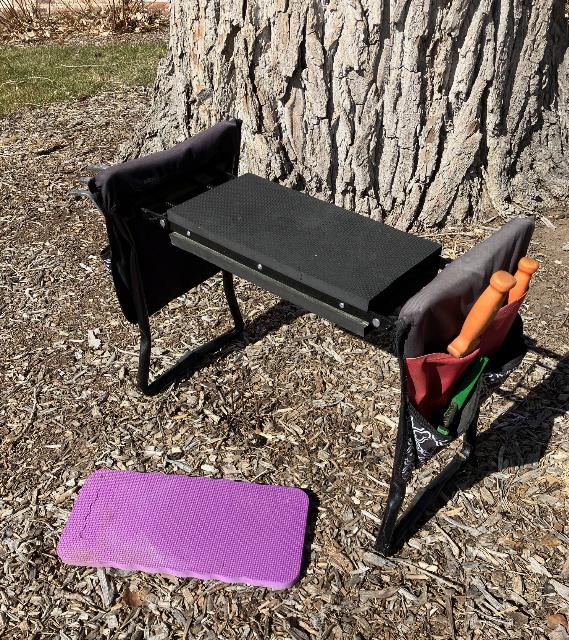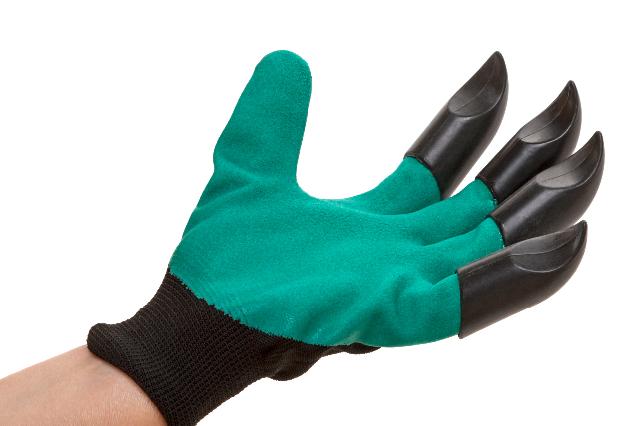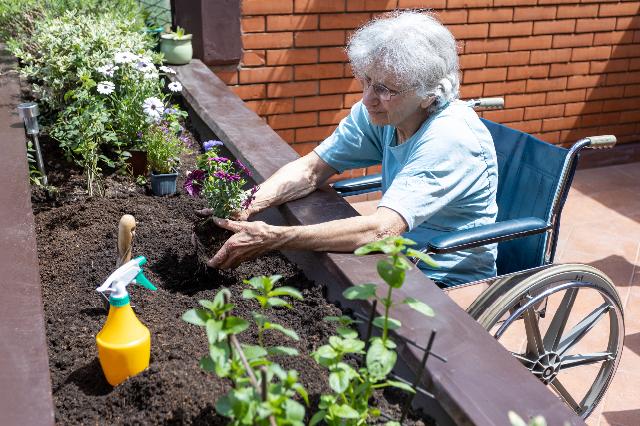By: Margerie Hicks, CSU Extension-Denver Master Gardener since 2010

Gardening can be a therapeutic and enjoyable activity for people of all abilities. Whether you have limited mobility, strength, perception, or dexterity, there are tools and methods available to cultivate your green thumb and create a vibrant garden oasis.
Below are a few potential tools and designs to make gardening more comfortable and enjoyable for those with physical challenges.
Adaptive Garden Equipment
Some of the following equipment can be found in metro Denver garden centers. You can find others that are more specialized by searching online.
- Ergonomic tools to reduce strain on joints and muscles. Look for lightweight tools with padded handles and angled grips to minimize wrist and hand discomfort. For example, a hoe with an angled handle offers a more comfortable and natural hand position.
- Long-reach tools to reach the ground without bending or stooping. Two of the most common are:
- Long-handled trowel
- Telescoping-handled weeder
- Ergonomic and/or battery-powered wheelbarrow with adjustable handles and improved weight distribution. This makes it easier to transport heavy loads of soil, mulch, or plants. Some have a lift for dumping the contents.
- Kneelers, knee pads, and seats. Seats are available with two levels and side handles to allow for pulling oneself up from a low position –– and to hang pouches for tool storage. After my knee surgery two years ago, I sat on the ground to pull weeds and had to call my husband to help me stand. I later discovered that by using the lower level of the seat, I could pull myself up unaided.

- Carpenter’s apron with big pockets to carry tools.
- Lightweight hose with a pistol grip handle.
- Claw gardening gloves make weeding and digging easy; they don’t require any grip strength to use.

- For people with visual impairments:
- Bright/contrasting colored equipment and tactile markings.
- Tools with built-in magnifiers to read plant labels or identify pests.
Design and Planning
- Raised garden beds are a game changer for people who use wheelchairs or walkers or have difficulty kneeling or bending down. They can be built or purchased at various heights to accommodate unique needs and preferences. This not only reduces physical strain, but also minimizes the risk of injury. In addition to their accessibility benefits, raised beds offer improved soil drainage and temperature control, plus reduced soil compaction.

- Accessible surfaces around raised beds are an important consideration. See this video about how to make a gravel surface wheelchair accessible. Make sure pathways are clutter-free. Don’t leave hoses or tools lying in the path. These can be a trip hazard or block access.
- Watering is made easier with automatic watering systems utilizing drip and soaker hoses. A retractable hose reel is easier to handle than a garden hose. Self-watering pots are also useful.
- Vertical gardens are visually pleasing, accessible and use minimal space. One technique is to use trellises or stakes to support climbing plants, such as cucumbers or beans. You can make trellises from various materials, including wood, metal, or even recycled materials like old ladders or pallets. Hanging baskets or wall-mounted planters can also make gardening tasks more accessible by bringing plants closer to eye level. Container gardening decreases the physical labor required to maintain an expansive garden, while also making it much simpler to care for plants. Drip irrigation also provides ease of maintenance.
- Benches can be placed around the garden for rest as needed.

For more detailed information to address a specific need, see this booklet from Washington State University. It includes directions for ordering hard copies.
By incorporating adaptive technology into gardening, people with physical limitations can overcome barriers and fully participate in the joys of gardening. The smart solutions I’ve mentioned here not only enhance accessibility, but also empower individuals to create and maintain beautiful and thriving gardens.

